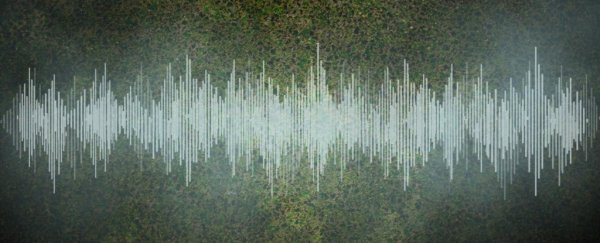For the first time, physicists have recorded sound waves moving through a perfect fluid with the lowest possible viscosity, as permitted by the laws of quantum mechanics, an ascending glissando of the frequencies at which the fluid resonates.
This research can help us to understand some of the most extreme conditions in the Universe - the interiors of ultradense neutron stars, and the quark-gluon plasma 'soup' that filled the Universe in the years just after the Big Bang.
"It's quite difficult to listen to a neutron star," said physicist Martin Zwierlein of MIT.
"But now you could mimic it in a lab using atoms, shake that atomic soup and listen to it, and know how a neutron star would sound." (You can listen to the recording here.)
Fluids encompass a range of matter states. Most people probably think of them as liquids, but a fluid is any substance that conforms to the shape of its container: Gases and plasmas are also fluids.
All three of these fluid states - liquid, gas and plasma - experience internal friction between layers of the fluid, which creates viscosity, or thickness. Honey, for instance, is highly viscous. Water is less viscous. In supercooled liquid helium, a fraction of the fluid becomes a zero-viscosity superfluid. But it's still not necessarily a perfect fluid.
"Helium-3 is a Fermi gas, so one might think that's close to the situation we have. But instead, it turns out that helium-3 is very sticky, even when it turns superfluid. Helium-3 is effectively a weakly interacting Fermi system, and it displays very large viscosities - even as it becomes superfluid," Zwierlein told ScienceAlert.
"The viscosity of superfluid helium-3 is a thousand times the quantum limit!"
A perfect fluid, according to quantum mechanics, is one with the lowest possible friction and viscosity, which can be described with equations based on the mass of the average fermionic particle it's made of, and a fundamental constant of physics called Planck's constant.
And, since the viscosity of a fluid can be measured by the way sound dissipates through it - a property called sound diffusion - a team of researchers devised an experiment to propagate sound waves through a fluid of fermionic particles to determine its viscosity.
Fermions are a class of particles that include the building blocks of atoms, such as electrons and quarks, as well as particles that are made of fermions, such as neutrons and protons, which are made of three quarks.
Fermions are bound by the quantum mechanical Pauli exclusion principle, which states that no two such particles in a system (like an atom) can occupy the same quantum state. This means that they can't occupy the same space as each other.
Chill a bunch of fermions, like 2 million atoms of lithium-6, down to a whisker above absolute zero and squeeze them into a cage of lasers, and their quantum fuzziness will let them jostle in waves that have barely any friction - the perfect fluid.
The experiment had to be designed to maximise the number of collisions between the fermions, and the lasers tuned so that fermions running into the boundaries would bounce back into the gas. This gas was maintained at temperatures between 50 and 500 nanoKelvin (-273.15 degrees Celsius, or -459.67 degrees Celsius).
"We had to make a fluid with uniform density, and only then could we tap on one side, listen to the other side, and learn from it," Zwierlein said. "It was actually quite difficult to get to this place where we could use sound in this seemingly natural way."
To "tap" on the side of the container, the team varied the light intensity at one end of the cylindrical container. This, according to the intensity, sent vibrations like different types of sound waves through the gas, which the team recorded through thousands of images - a bit like ultrasound technology.
This allowed them to find ripples in the fluid's density analogous to a sound wave. In particular, they were looking for acoustic resonances - an amplification in the sound wave that's produced when the frequency of the sound wave matches the frequency of the natural vibration of the medium.
"The quality of the resonances tells me about the fluid's viscosity, or sound diffusivity," Zwierlein said. "If a fluid has low viscosity, it can build up a very strong sound wave and be very loud, if hit at just the right frequency. If it's a very viscous fluid, then it doesn't have any good resonances."
The researchers found very clear resonances in their gas, particularly at low frequencies. From these, they calculated the fluid's sound diffusion. This was the same value that could be derived from the fermionic particle mass and Planck's constant - indicating that the lithium-6 gas was indeed behaving as a perfect fluid.
This has some pretty interesting implications. The interiors of spinning neutron stars, although many orders of magnitude higher in temperature and density, are also thought to be perfect fluids. They also have many oscillation modes, in which sound waves propagate through the star.
We could use fluids such as the team's lithium-6 gas to understand the diffusivity of neutron stars, which could, in turn, lead to a better understanding of their interiors, and the gravitational wave signals generated by merging neutron stars.
And it could help scientists better understand superconductivity, in which electrons can flow freely through materials.
"This work connects directly to resistance in materials," Zwierlein says. "Having figured out what's the lowest resistance you could have from a gas tells us what can happen with electrons in materials, and how one might make materials where electrons could flow in a perfect way. That's exciting."
The research has been published in Science.
